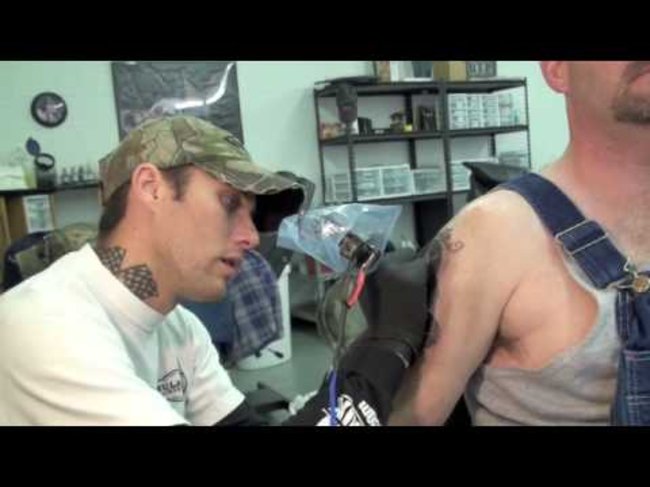The art of tattooing has been around for centuries, with some civilisations adopting it several millennia ago. It’s a great way to express yourself, and it is considered to be part of a ritual in other cultures. But what goes into tattooing? Is there a lot of science involved?
When it comes to tattooing, you first need to know about the different components of the skin. The skin is the largest organ in the human body and it consists of three important layers: the epidermis, the dermis, and the subcutis, or the hypodermis.
The epidermis is the outermost layer of the skin, and it helps to protect the body from any external impacts, such as water, heat, and objects, as well as providing a barrier that protects the skin from any harmful bacteria that can result in infection. One feature of the epidermis is that it doesn’t contain any blood vessels, meaning that it can provide the perfect initial layer of skin when performing a tattoo.
The dermis is situated below the epidermis and it is the section that contains various tissues that are responsible for protecting the body from any external stresses and strains. It is also where many of the nerve endings are located, which help to provide the sense of heat and touch, as well the hair follicles, sweat glands, and other important features.
The subcutis, or the hypodermis, is the final part of the skin; well, in fact, it isn’t a part of the skin at all. It is situated directly below the dermis and its main function is to attach the skin to the muscles and bone, as well supplying the skin with blood vessels and nerves. However, the hypodermis mostly consists of fat, which provides both protection and insulation.

A tattoo is simply a type of skin modification where a specialist applies a needle to the dermis layer of the skin. The secret with a tattoo is that the needle also has a feed that provides ink to the end of the needle, which is applied to the dermis.
The most important thing to consider when getting a tattoo is to make sure that it is completely sterilised and it is free of any bacteria whatsoever. The reason why this is the case is because the needle has to penetrate the epidermis in order to get to the dermis; remember that the epidermis is there to protect the skin from any external obstacles and bacteria.
As such, having sterilised tattooing equipment is used to ensure that the chances of having any bacteria getting to the dermis are minimised.

There are a lot of things that actually go into getting a tattoo. The first step, which is the most obvious one, is that the sterilised tattoo needles pierce the skin so that the ink can reach the dermis layer of the skin. However, because the needle pierces the epidermis, this causes the body to react in such a way that inflammation begins to occur.
The body’s first response is to target the white blood cells towards the wound and repair the damaged site. These cells aim to repair the wound, but they also work together to fight against any foreign chemicals or materials, such as bacteria, but more importantly the dye that is used within the tattooing needle.
However, while this process occurs, the cells don’t attack all of the dye, as the majority of it is absorbed into the dermis, which results in the tattoo image; this is the reason why tattoos are permanent, and once the epidermis repairs itself, it’s as if there is a thin barrier protecting the tattoo.

One common thing that you will see when people get tattoos is that their tattoos are covered in cling film; there’s a reason behind this. One of the reasons is that it helps to protect the tattoo area from any bacteria present in the air. Another reason is to prevent any bleeding occurring; the bleeding can actually result in some of the ink to run out as well, which can effectively result in a less defined tattoo.
Another thing you need to do, under any circumstances, is to not itch your tattoo. This is because itching the tattoo site can aggravate the region, which can, potentially, cause the ink pigments to break down slightly. The other reason is because it can promote the spread of bacteria around the tattooed area, which can lead to a not very nice infection.
And that’s pretty much it when it comes to tattoos. As long as you make sure that the amount of contact between a tattoo and the surroundings is minimised, then you will have a great looking tattoo once it has fully recovered.
At Body Shock, we specialise in providing the high quality tattoo equipment which is completely sterile, meaning that our equipment is perfectly safe to use without attaining any harmful problems.
If you want to know more about the products we can provide, then please contact us today on 01922 744088 and one of our specialists will be more than happy to help.